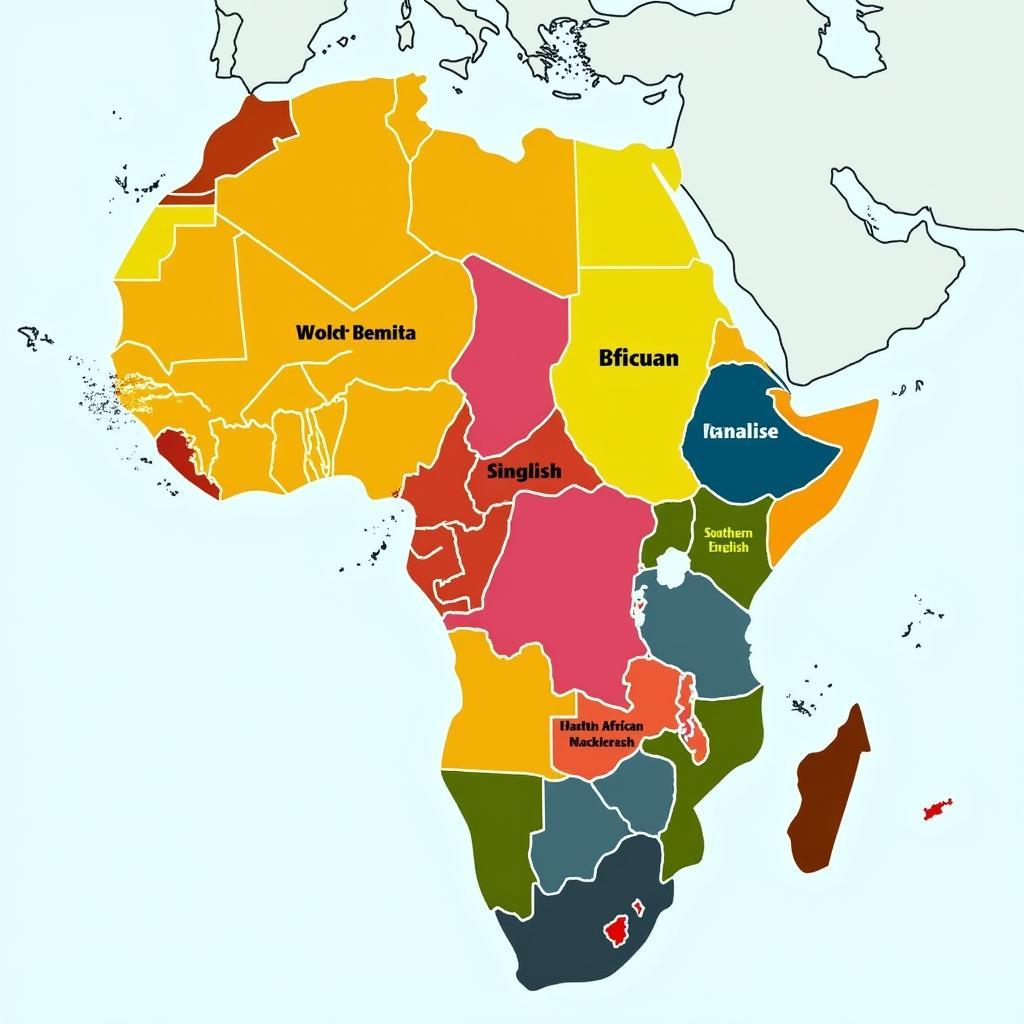The Fascinating World of the African Clawed Frog
The African Clawed Frog, a fascinating amphibian, holds a unique place in both scientific research and the pet trade. This article delves into the captivating world of these aquatic creatures, exploring their natural habitat, unique characteristics, care requirements, and the ethical considerations surrounding their ownership. Let’s embark on a journey to uncover the secrets of these intriguing animals.
 African Clawed Frog in a well-maintained aquarium
African Clawed Frog in a well-maintained aquarium
Understanding the African Clawed Frog: Habitat and Characteristics
Native to sub-Saharan Africa, the African clawed frog, Xenopus laevis, thrives in warm, still bodies of water like ponds, marshes, and streams. These frogs are entirely aquatic, rarely venturing onto land except during periods of drought or when searching for new water sources. They possess a streamlined body, powerful hind legs equipped with clawed toes for digging and swimming, and small, lidless eyes positioned on the top of their heads. African clawed frog facts. Their smooth, slippery skin ranges in color from olive green to brown, often with dark spots or blotches. Unlike many other frog species, the African clawed frog lacks a tongue and instead uses its sensitive fingers to detect and capture prey.
The Role of the African Clawed Frog in Scientific Research
The African clawed frog has played a pivotal role in scientific advancements, particularly in the fields of developmental biology and pregnancy testing. In the early 20th century, scientists discovered that these frogs could be used to detect human pregnancy by injecting a woman’s urine into a female frog. If the woman was pregnant, the hormones in her urine would induce the frog to lay eggs. This method, known as the Hogben test, was widely used before the development of modern pregnancy tests. Today, African clawed frogs remain valuable research subjects due to their ability to regenerate limbs and their susceptibility to certain diseases, making them useful models for studying human health.
Caring for an African Clawed Frog: A Guide for Responsible Pet Owners
While fascinating creatures, African clawed frogs have specific care requirements that must be met to ensure their health and well-being. A spacious aquarium with a secure lid is essential, as these frogs are adept at escaping. The water should be dechlorinated and maintained at a temperature between 68-78°F (20-26°C). A filtration system is crucial for maintaining water quality, and regular water changes are necessary. African clawed frogs are carnivorous and require a diet of live or frozen foods such as bloodworms, brine shrimp, and small insects. African clawed frog tadpole care. Overfeeding can lead to health issues such as African clawed frog bloat, so it’s important to monitor their food intake.
What do African Clawed Frogs eat?
African clawed frogs are primarily carnivorous. Their diet typically consists of insect larvae, small crustaceans, and worms. In captivity, they can be fed commercially available frog food, bloodworms, brine shrimp, and occasionally small pieces of lean meat.
Can African Clawed Frogs live with other fish?
Keeping African clawed frogs with other fish can be challenging. While some fish may coexist peacefully, others may become prey or nip at the frog’s sensitive skin. Careful consideration is required before introducing any tank mates. African clawed frog and betta fish.
Ethical Considerations and Conservation Status
The popularity of African clawed frogs in the pet trade raises ethical concerns. In some regions, escaped or released pet frogs have become invasive species, disrupting local ecosystems and competing with native wildlife. It’s crucial for potential owners to understand the long-term commitment involved in caring for these animals and to ensure they are not released into the wild. While the African clawed frog is not currently considered endangered, their populations are threatened by habitat loss and pollution. Supporting conservation efforts and choosing captive-bred frogs from reputable breeders are essential steps in protecting these unique creatures.
Conclusion
The African clawed frog is a remarkable creature with a rich history and an important role in both scientific research and the pet trade. Understanding their unique needs and the ethical considerations surrounding their ownership is crucial for responsible pet keeping and conservation efforts. African clawed frog ielts listening. By appreciating these fascinating amphibians and promoting responsible practices, we can ensure their survival for future generations.
FAQ
-
How long do African clawed frogs live?
African clawed frogs can live for 15-20 years in captivity.
-
Do African clawed frogs need a heater?
Yes, a heater is necessary to maintain the appropriate water temperature for African clawed frogs.
-
Are African clawed frogs social animals?
African clawed frogs can be housed together, but it’s essential to provide enough space to avoid overcrowding and aggression.
-
How often should I clean my African clawed frog’s tank?
Regular partial water changes (about 25%) should be performed weekly or bi-weekly, depending on the tank size and number of frogs.
-
Can African clawed frogs bite?
While African clawed frogs don’t have teeth, they can nip or grab with their powerful jaws, which can be surprising.
When you need assistance, please contact us:
Phone Number: +255768904061
Email: kaka.mag@gmail.com
Or visit us at: Mbarali DC Mawindi, Kangaga, Tanzania.
We have a 24/7 customer service team.


